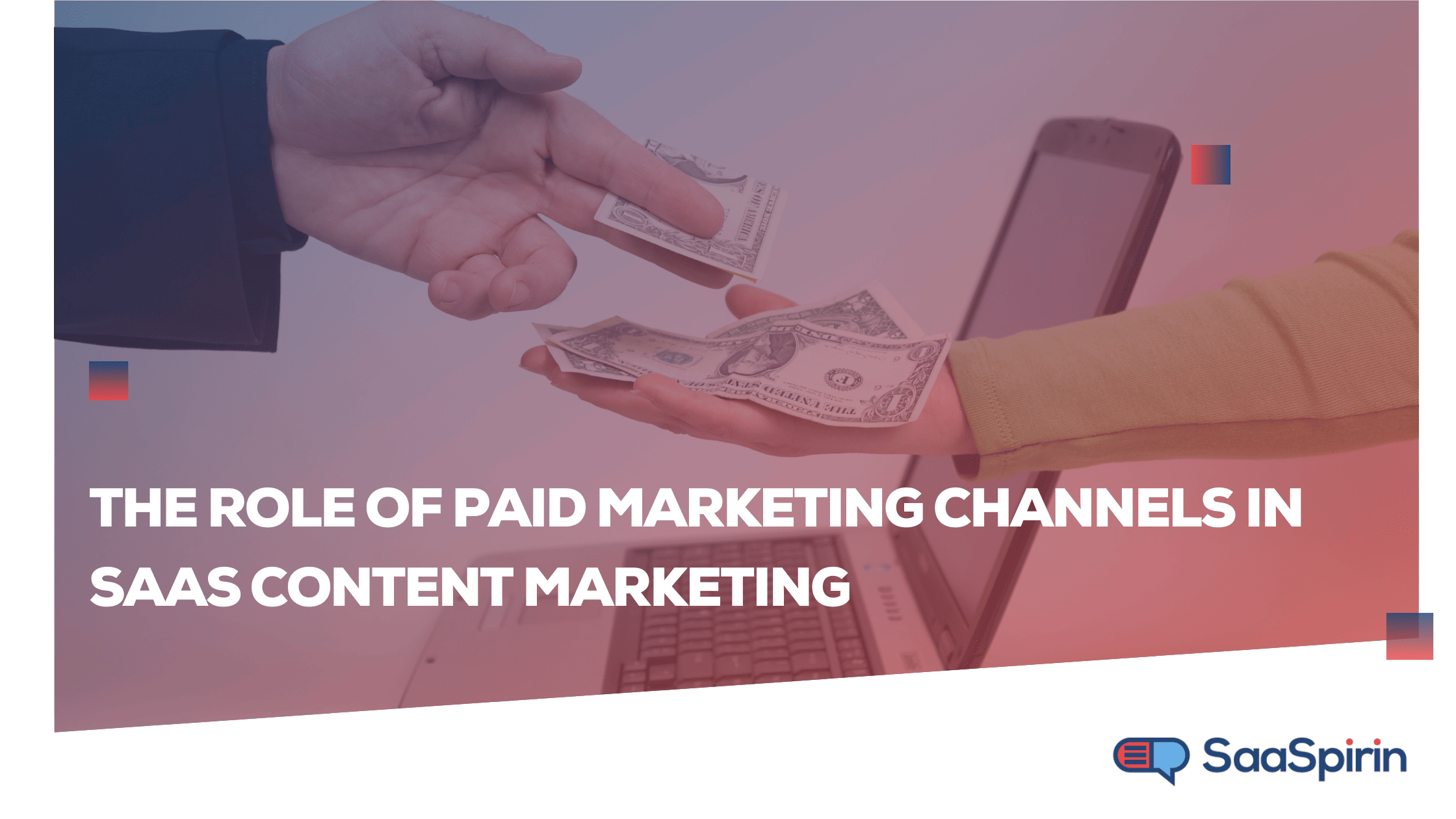Essentials of a B2B SaaS Content Marketing Strategy - What You Need to Succeed
By Nicolas Jacobeus on June 11, 2021
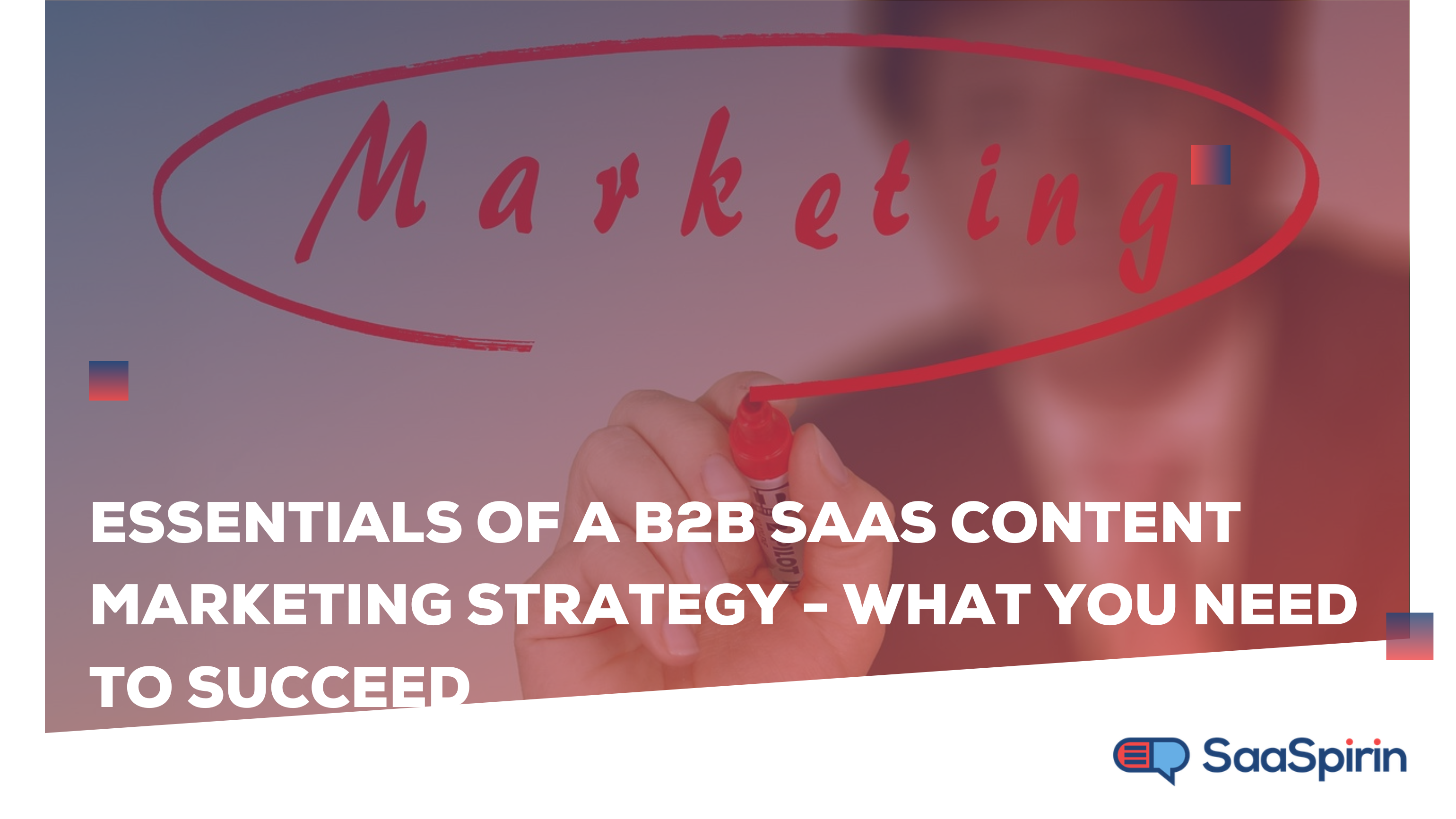
Research shows that the SaaS industry is expected to have grown over the five-year period from 2018–2022 at an annual rate of 12%. As a thriving industry, many players are jumping in to get a piece of the pie. The result? The competition is getting stiffer.
To succeed, you need an effective marketing strategy that will help you stand out from the crowd.
For SaaS businesses, content marketing has proven to be one of the most effective channels for drumming up business. That’s why SaaS content marketing has become a staple for many marketers.
What is SaaS content marketing? It’s the creation and promotion of content related to your SaaS product. It serves to:
- Increase brand awareness
- Drive organic traffic
- Educate your audience
We’ll touch on how content marketing helps you achieve all this below.
The importance of B2B content marketing for SaaS brands
The SaaS industry is one of the fastest-growing at the moment. Here’s a visual look at the growth trend from Statista:
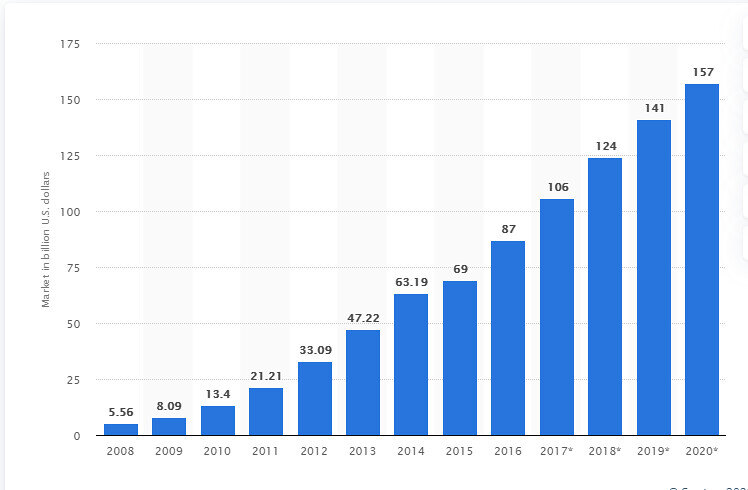
And with many SaaS brands competing for the same customers, you need an edge over your competition.
But you might be wondering: Does content marketing still work?
Consider these statistics from a 2018 study conducted by Profit Well:
- Brands that blog get as much as 67% more leads than brands that don’t.
- Content marketing helps brands improve customer retention rates by 5–10%.
- Companies that have a content marketing strategy see around a 30% higher growth rate than those that don’t.
The question is not whether it still works, but rather are you doing what’s working? In 2021 and beyond, content marketing for SaaS companies will continue to evolve. B2B content marketing will likely remain a critical part of SaaS marketing strategies, because it forms the foundation of inbound marketing.
What is inbound content marketing?
Inbound content marketing is the practice of creating content to attract the right audience to your brand. It’s the opposite of outbound marketing, where you initiate conversations with your audience by reaching out to them.
Why content marketing works
So why does content marketing work as a SaaS marketing strategy? Here are a few reasons:
1. Drives brand awareness
One of the most important uses of content marketing for SaaS brands is to drive brand awareness. Content marketing can be a great form of PR because it puts your brand in front of many people. It’s also useful for brand recall: The more people interact with your brand, the more they remember it.
2. Builds authority
B2B buyers are very picky about the brands they work with. They want brands they can trust. And the best way to gain trust is by building authority—content marketing helps you do just that. Executed well, your B2B content marketing strategy will help you attract a lot of backlinks, helping you build your website’s domain authority, an important factor in boosting search engine optimization (SEO).
3. Educates your audience
Part of the buying journey involves educating your customers about your product and the problems it solves. Content plays a huge role at the research stage, with 49% of buyers saying they prefer to use content when researching their next purchase.
4. Drives traffic to your website
Your website is a lead generation machine. For those leads to come through, you need to lure and hook them with valuable content. This can be content you publish on your website, or guest posts on other sites.
Now that you’ve seen the value of SaaS content marketing, let’s dive into how you can pull it off.
SaaS content marketing strategy: An overview
63% of brands don’t have a documented content marketing strategy.
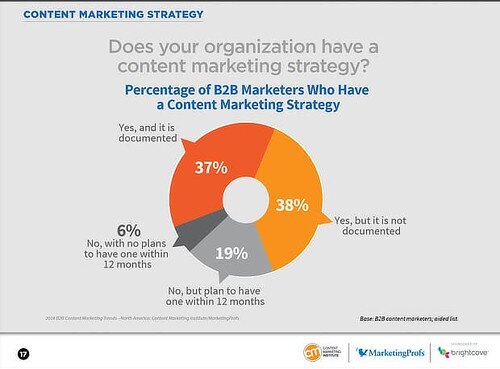
Shocking as it may be, this is good news for you.
Being among the 37% of businesses that do have a documented strategy gives you a leg up over your competition.
Developing a B2B content marketing strategy
There’s more to B2B content marketing than just writing blog posts.
So, what is included in content marketing?
- Developing your brand voice
- Audience research
- Competitor research
- Keyword research
- Choosing the right content formats
- Creating a content framework
- Designing a content calendar
- Content production
- Content promotion
- Analytics
These are just some of the elements that make up a successful content marketing strategy. And, of course, you’ll need to document everything.
Read more: Content Marketing Structure for a Busy SaaS Company (In One Hour or Less)
Why research is essential
The first step in developing an effective B2B content marketing strategy is the research stage. Here’s what you should know before you even start creating content:
Know your target audience

Audience research is the foundation of your content marketing strategy. It involves:
- Understanding their pain points or aspirations
- Knowing what questions they’re asking about your product
- Understanding the intent behind their search queries
Knowing your target audience empowers you to create personalized content.
Competitor analysis
Competitor analysis is the practice of researching your competitors and, in this case, their content marketing strategy. It involves knowing:
- Who your competitors are
- The audience they’re targeting
- The keywords they build their content around
- Content types and formats
- Publishing schedule
Everything your competitors do that results in positive results is worth emulating. However, you must also note what doesn’t work so you can avoid making the same mistakes.
Read more: Why Content Planning Should Never Start With Keyword Research
Key steps in content development
With the research stage sorted, you can now move on to the next phase of your SaaS content marketing strategy: content development.
This is the stage where you plan and produce your content. Here’s what’s involved:
Establish an editorial mission
The first step in content development is to establish an editorial mission. This is the blueprint that will direct your entire content creation team. An editorial mission answers questions such as:
- Who are you trying to reach?
- How will you reach them?
- What do you want to achieve with your content?
An editorial mission ensures that the entire team is working to achieve the same objectives, no matter where they are on your content value chain. It also helps you identify which type of content should be prioritized.
Set goals for your content
Content created just for the sake of filling an editorial calendar hardly produces results. You have to set goals for every piece of content you produce for each stage of your marketing funnel.
Here are some examples of content goals:
- Brand awareness
- Lead generation
- Encourage trial sign-ups
- Convert prospects to paid customers
- Customer retention
Having a concrete roadmap for your content goals will result in content that helps you meet your brand’s overall goals.
Read more: Blog Goals - How to Set Realistic Growth Targets
Conduct keyword research
Most businesses miss the mark when it comes to keyword research. They don’t match their keywords to their audience’s pain points, goals, and intent.
Keywords that don’t match user intent may drive a lot of traffic to your website, but in most cases, that traffic will be irrelevant.
To attract the right kind of traffic, you have to ensure that your audience research directs your keyword research.
And when it comes to keyword research, you need to know that there are two main types of keywords:
- Short-tail keywords. Also known as “head terms,” these consist of one or two words. In most cases, they’re quite hard to rank for because of the competition to rank for them.
- Long-tail keywords. These are made up of more than two words. Not only are they easier to rank for, but it’s also easier to match user intent with long-tail keywords.
Overall, your choice of keywords must be informed by your audience, your brand identity, and their relevance to your content marketing goals.
Optimize headlines and subheadings
Creating optimized headlines and subheadings is another crucial aspect of content development that you must pay close attention to. This is because your headline is the first part of your content readers see when scrolling through the search engine results pages (SERPs).
And when they do click on your headline, 73% of people admit to skimming through content. They mostly want to see if your content is relevant to what they’re looking for. That’s why you must optimize your subheadings to meet searcher intent. It results in readers digging deeper into your content.
Selecting a content framework
Content frameworks are a part of information architecture and are influenced in part by your editorial mission.
Common content frameworks you can employ to structure your blog include:
- Categories. This is where you group related content under the same categories.
- Clusters. Topic clusters involve creating content around the same topic and using internal links to connect the pages systematically.
- Content hubs. A content hub consists of a pillar page and other pages of content built around it. Each page you create must touch on a section that you discuss on the pillar page.
The content framework you use has an impact on user experience (UX). A positive UX results in visitors staying longer on your website and encourages them to visit again.
How to build organic traffic for your SaaS content
A content marketing strategy involves a lot of pieces that must work together cohesively. And one such element is SEO—driving organic traffic to your content.
SEO techniques to support your content marketing

Let’s quickly look at some important SEO techniques you need to master to give your content a better chance of ranking.
A linking strategy
Links are an important factor search engines consider when ranking content. There are three types of links that you must include in your linking strategy:
- Internal links. These are the links you create between pieces of content on your blog. Create an internal linking strategy that helps show search engines which pages are the most important.
- Outbound links. Outbound (aka external) links point from your posts to other resources. They help establish authority for your blog posts—if you point to reputable resources.
- Inbound links. Also known as backlinks, these are links from other websites pointing to your website. A couple of ways you can build backlinks include guest posting and a link building outreach.
Get your technical SEO right
Technical SEO refers to the optimization of your website’s technical aspects to improve its SEO. Some important aspects to consider are:
- Page speed. Page speed is a crucial ranking factor. Improve it by, among other things, enabling compression of files, optimizing images, and using a content delivery network (CDN).
- Crawlability. Crawlability refers to a search engine's ability to access and move through the pages of a website.
- Indexability. This refers to a search engine's ability to analyze and add your web pages to its index or collection of web pages. If your blog posts aren’t indexed, they won’t show up on the SERPs.
Refresh your old content
Another effective SEO technique you can use to boost your content marketing is to refresh your old content. This involves:
- Adding relevant keywords and their synonyms
- Including new statistics and facts
- Adding new internal links
- Check for broken links
In some cases, this technique has increased traffic to a post by 106% or more.
Content promotion
So you’ve hit the publish button on your SEO-optimized blog post.
However, publishing a blog post does not guarantee its visibility—you have to promote it.
A few ways you can do that are:
- Sharing your post on social media
- Tagging expert sources when sharing on social media
- Sending it to your email list
- Syndicating content
- Using content promotion platforms
- Using your post to answer questions on relevant forums
Promoting your content ensures that it reaches the right audience. It can also boost your SEO, as social signals are another indicator to search engines that your content is valuable.
Read more: How to Promote an Article: 9 Low-Lift Tips
The ideal publication schedule
For your SaaS content marketing strategy to be effective, you must stick to a clear publication schedule. This helps you build momentum with consistency.
But the question is: How often should you publish new content?
This will depend on your blogging goals and your business model, but here’s a template that you can use (or build on) to get started:
Content Production Schedule Examples
You May Also Like
These Related Stories
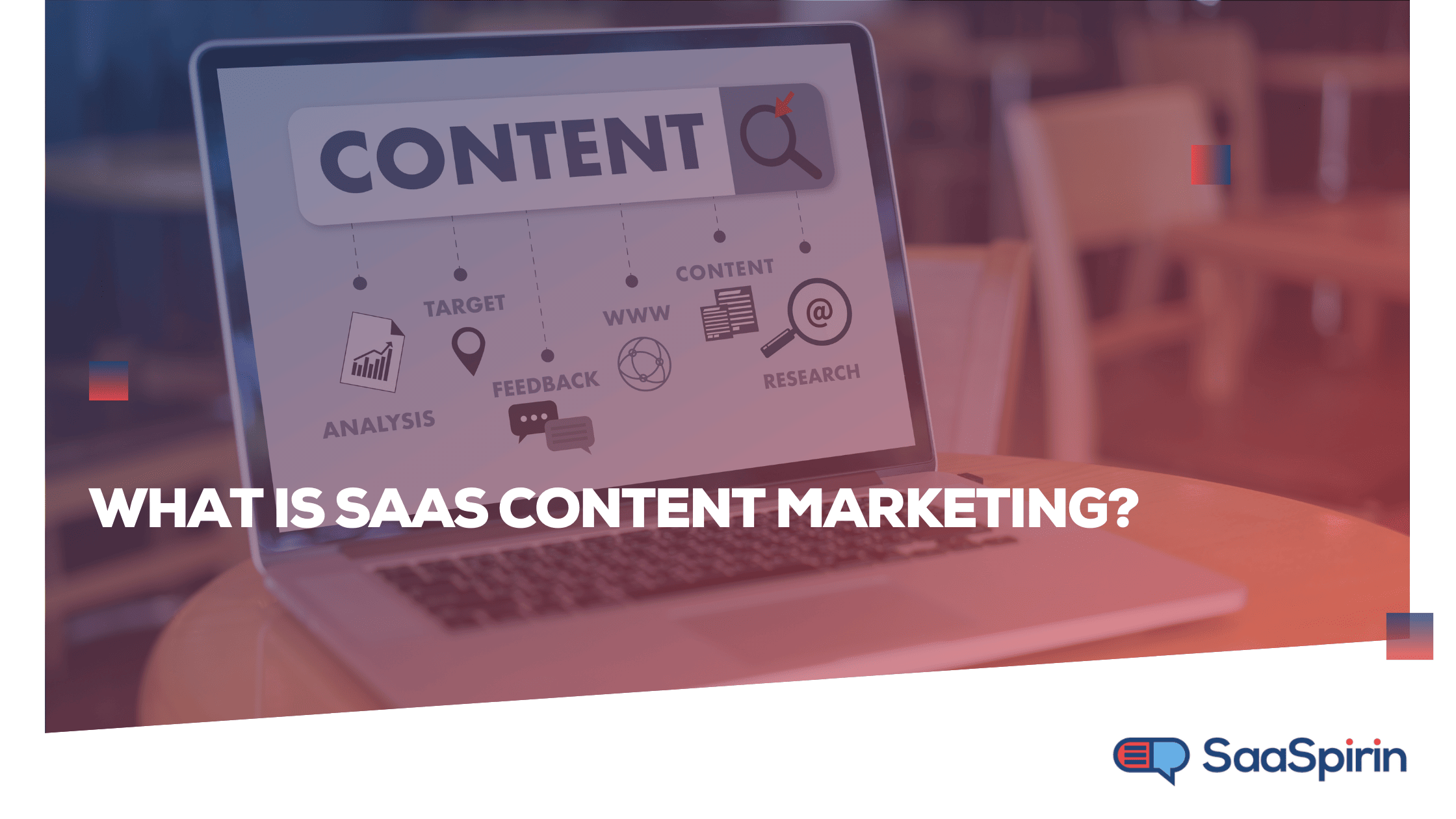
What is SaaS Content Marketing?
.png)
Which Type of SaaS Content Marketing Agency Do You Need?
